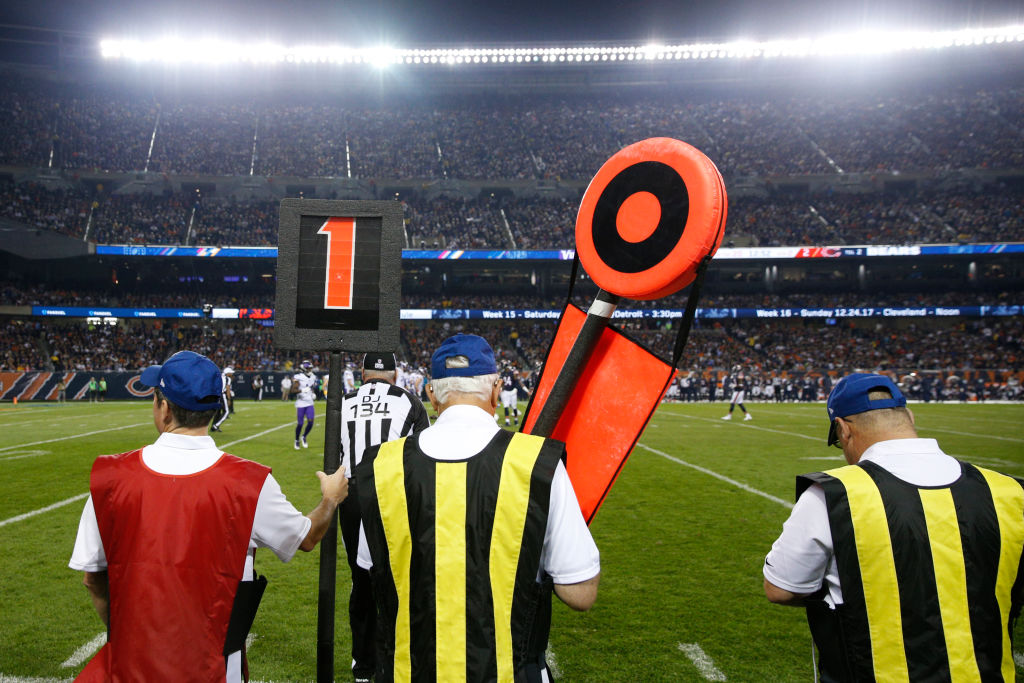NFL
Why Does the NFL Still Use Chains to Measure First Downs?

Sports leagues often implement new technology, whether it’s using technology to improve safety or something that removes human error from the equation, like reviewing close plays.
The NFL is no different, but one critical area of the game has not embraced technology: measuring first downs. The NFL still uses “chain gangs” to determine whether a team reached the first-down marker, even though technology could improve the process. So why do NFL chains still exist?
The story of chains in the NFL
This is the 100th season of the NFL, and the league has used chains to measure first downs for most of this time. The chain connects two signal poles to indicate how far the team on offense must go to get the first down. The chain crew is comprised of three members, one who holds the pole in the rear, another who holds the pole in the front, and a third who holds a pole indicating the location of the line of scrimmage.
The front “rod man” stays in place until a first down is made and the chain crew must go to the new spot, while the other two members of the chain gang move with the ball after each play. When there is a play near the first-down marker, the chain crew famously runs onto the field to help the game officials determine whether the first down was achieved.
The impact of chain crews and human error
Using this antiquated system to measure first downs leads to human error in many ways. The first is when the crew runs from the sideline to the field: It’s possible they’re not running in an entirely straight line and may miss the actual yard lines where they should place the poles. The other area that could lead to human error is when the officials place the ball next to the chain to take the actual measurement. It is easy for the officials to unintentionally change the spot when picking the ball up off the field to place it next to the chain.
This entire process heavily relies on the chain crew and officials having good eyesight and being precise with the placement of everything from the poles to the ball. One thing the process provides, which the NFL may like, is drama because it makes for good TV while waiting for officials to take the measurement and signal whether the offense got the first down.
Technology that could improve accuracy
While the league has shown no inclination to improve or update the process, technology exists that could speed it up and, more importantly, improve the accuracy of the measurements — and it’s already being used in at least one sport. Tennis uses a system called Hawk-Eye, which utilizes multiple cameras to track a ball’s trajectory, creating a three-dimensional image of where the ball is located at all times.
When a call is challenged, the system can instantly produce a graphic showing the exact location of where the ball landed on the court. Football is a more complex game, with a bigger field and 22 players on the field at once. But the system could be adapted for football.
Otherwise, there are other existing technologies, like lasers, that the league could embrace. After all, NFL owners aren’t hurting for money, and it would take just a fraction of their net worth to incorporate the technology into the game.











